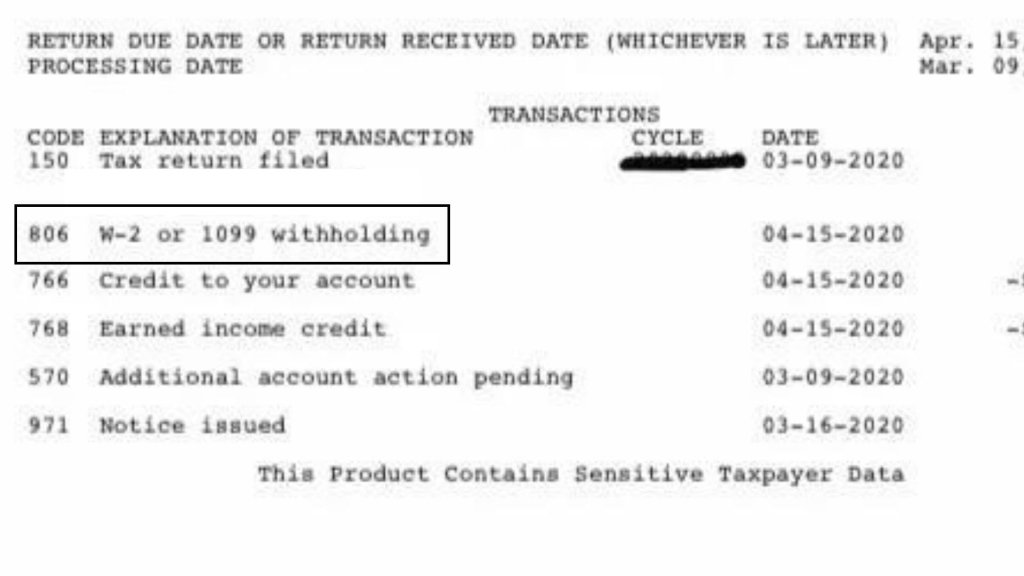
IRS Transcript Code 806 refers to a “W-2 or 1099 withholding” transaction. This code appears on tax transcripts that provide a record of an individual’s tax return information, including income, deductions, and payments. A W-2 form is issued by an employer and reports an employee’s wages, tips, and other compensation, as well as the taxes withheld from their paycheck for federal and state purposes. A 1099 form is used to report income earned as an independent contractor or freelancer, which may include payments for services, rent, or royalties.
When IRS Transcript Code 806 appears on a tax transcript, it indicates that the taxpayer had withholding from their W-2 or 1099 income, which was applied to their tax liability for the year. This code can be helpful when reviewing past tax returns, as it provides a record of the taxpayer’s withholding history.

What to Know About IRS Code 806?
- The purpose of withholding is to ensure that taxpayers pay their taxes throughout the year rather than waiting until the end of the year to pay them all at once. This helps the government collect revenue more consistently and reduces the risk of taxpayers being unable to pay their full tax liability.
- The amount of withholding is typically based on the taxpayer’s income, filing status, and the number of allowances claimed on their W-4 form (for employees) or on their Form W-9 (for independent contractors). The more allowances claimed, the less tax will be withheld from each paycheck or payment.
- If too much tax is withheld from a taxpayer’s income, they may be eligible for a refund when they file their tax return. If too little tax is withheld, the taxpayer may owe additional tax when they file their return.
- Taxpayers can adjust their withholding at any time by submitting a new W-4 or Form W-9 to their employer or client. This can be useful if their income or financial situation changes during the year.
- It’s important for taxpayers to review their withholding periodically to ensure that they’re on track to pay the right amount of tax for the year. This can help them avoid penalties for underpayment of estimated tax and reduce the likelihood of owing a large amount of tax when they file their return.